Air Operations, Bonin and Volcano Islands 30th Heavy Bomb Group B-24s based at Saipan attack Iwo Jima and shipping off Chichi Jima.
[  | |   ] ]
Air Operations, Carolines - US carrier aircraft from Task Group 38.4 complete two days of pre-invasion strikes against Japanese anti-aircraft and beach defenses at Peleliu and Angaur islands.
- During the night, 868th Heavy Bomb Squadron SB-24s attack airfields and defenses in the Palau Islands.
[  | |   ] ]
Air Operations, CBI
BURMA
- 12 10th Air Force P-47s attack roads, towns, and targets of opportunity in eastern Burma and near the Chinese cities of Lungling and Tengchung.
CHINA
- 18 308th Heavy Bomb Group B-24s attack stores at Manling.
- 30 341st Medium Bomb Group B-25s attack Kiaotow and Tunganhsien, and targets of opportunity around Lingling. 12 14th Air Force P-40s attack targets along the Burma Road near Lungling.
- 50 P-40s and P-51s attack a wide variety of targets between Tungting Lake and Canton.
- 23 7th Heavy Bomb Group B-24s transport fuel from India to Kunming.
[  | |   ] ]
Air Operations, East Indies - FEAF B-24s attack the Galela and Miti airfields on Halmahera.
- B-25s attack the Kairatoe and Boela airfields on Ceram and nearby villages.
- V Bomber Command B-25s and A-20s attack the Kaoe airfield on Halmahera.
- V Fighter Command P-38s attack oil stores at Boela, the Amahai airfield on Ceram, and the Namlea airfield on Boeroe.
- 1 A-20 is downed by ground fire over the Kaoe airfield on Halmahera.
[  | |   ] ]
Air Operations, Europe The US 8th Air Force carries out the last of its 'shuttle' raids, 139 aircraft attack an arms factory at Chemnitz, in Germany, and go on to land at bases in the Soviet Union.
RAF BOMBER COMMAND
Daylight Ops:
- 218 aircraft of Nos. 4, 5, 6 and 8 Groups attack German positions outside Le Havre. Included in the aircraft total are 105 Halifaxes, 103 Lancasters and 10 Mosquitos. The bombing is carried out accurately in good visibilty, but the Master Bomber orders the final wave to cease bombing because of smoke and dust. 171 aircraft bomb without a loss.
- 205 Halifaxes, 154 Lancasters and 20 Mosquitos are sent to bomb synthetic oil plants at Castrop-Rauxel, Kamen and Gelsenkirchen. The first two targets are clearly visible and are accurately bombed, but the Nordstem plane near Gelsenkirchen is partially protected by a smoke screen which hinders bombing and prevents the observation of results. The bombing forces are escorted by 26 squadrons of fighters, 20 squadrons of Spitfires and 3 each of Mustangs and Tempests. They meet no German fighters.
- 5 Halifaxes of No. 4 Group and 2 Pathfinder Lancasters are lost on the Nordstem raid and 1 Lancaster on each of the other 2 raids. The losses are caused either by flak or by 'friendly' bombs.
Minor Ops:
- 19 aircraft are on Resistance operations and there are 5 RCM sorties.
Evening Ops:
- 226 Lancasters and 14 Mosquitos of No. 5 Group are sent to Darmstadt. A previous raid by this Group in August had failed to harm Darmstadt but, in clear weather conditions, the group's marking methods produce an outstandingly accurate and concentrated raid on this almost intact city of 120,000 people. A fierce fire area is created in the center and in the districts immediately south and east of the center. Property damage in this area is almost complete. Casualties are very heavy.
- The Darmstadt raid, with its extensive fire destruction and its heavy casualties, was held by the Germans to be an extreme example of RAF 'terror bombing' and is still a sensitive subject because of the absence of any major industries in the city. Bomber Command defended the raid by pointing out the railway communications passing through Darmstadt. The directive for the offensive against German communications had not yet been issued to Bomber Command, although advance notice of the directive may have been received. Darmstadt was simply one of Germany's medium-sized cities of lesser importance which succumbed to Bomber Command's improving area-attack techniques in the last months of the war when many of the larger cities were no longer worth bombing.
Minor Ops:
- 47 Mosquitos are sent to Berlin and 7 to Steenwijk, 76 Halifaxes and Lancasters lay mines in the Kattegat, and there are 44 Mosquito patrols and 13 RCM sorties.
- 3 minelaying Lancasters and 1 Mosquito on the Berlin raid are lost.
US 8th AIR FORCE
GERMANY:
- 1,016 8th Air Force heavy bombers, escorted by a total of 411 VIII Fighter Command fighters, attack synthetic-oil plants at eight locations, plus an ordnance depot at Magdeburg, an engineering plant at Hannover, and numerous targets of opportunity.
- More than 500 Luftwaffe fighters challenge the attack, with the result that 40 heavy bombers and 17 USAAF fighters are downed in the first major aerial clash since May 28.
- In the best one-day tally of the war so far, USAAF fighter pilots down 124 Luftwaffe aircraft over Germany between 1040 and 1530 hours.
- On the first leg of the third 8th Air Force FRANTIC shuttle-bombing mission, 75 B-17s of the 96th and 452nd Heavy Bomb Groups and 64 20th Fighter Group P-51s attack a synthetic-oil plant at Chemnitz with 146 tons of bombs and land at bases in the Soviet Union.
US 9th AIR FORCE
FRANCE:
- A total of 358 IX Bomber Command B-26s and A-20s attack strongpoints and gun emplacements in and around Metz.
- XIX TAC fighter-bombers continue to assist the US 3rd Army in deflecting a German counterattack along the Moselle River.
US 12th AIR FORCE
ITALY:
- 12th Air Force B-25s attack supply stores and two rail bridges.
- 12th Air Force B-25s attack German Army positions along the Gothic Line.
- XII TAC fighter-bombers attack bridges, gun emplacements, rail lines, railway guns, supply stores, and other targets in and around the battle area.
US 15th AIR FORCE
FRANCE:
- 54 15th Air Force B-24s transport supplies to US Army ground forces in France.
[  | |   ] ]
Air Operations, Japan 4 28th Composite Bomb Group B-25s attack small vessels off Shimushu Island.
[  | |   ] ]
Air Operations, New Guinea - V Bomber Command A-20s attack the airfields at Nabire, Otawiri, Sagan, and Urarom.
- V Fighter Command fighter-bombers attack facilities and anti-aircraft batteries at the airfields of Manokwari and Ransiki.
[  | |   ] ]
Allied Planning Over the next six days Churchill and Roosevelt and their staffs meet in Quebec for the Octagon Conference. There is little change made in the overall strategy. It is agreed to continue with the campaigns in northwest Europe and Italy along the established lines. Guidelines are laid down for the war in the Pacific and the occupation of Germany after the Allied victory. Unusually there is no opposition even from the US Navy representatives to a vigorous policy in Italy. A program of attacks for Burma is agreed. Adm Mountbatten's task will be the re-capture of Burma and re-opening the road from India to China, objectives to be achieved by March 15, 1945. Also after Churchill and Roosevelt have talked the matter over the US Navy concedes that British forces should join their own for the final campaigns against Japan. The American invation of Leyte is approved, as are plans for the British fleet and the RAF fo support the final campaigns against Japan. The conclusive operations in the Pacific are to be the invasion of Kyushu Island in October 1945 and Honshu Island in December.
Also agreed upon are the British and American occupation zones in Germany. Roosevelt and Churchill initial the Morgenthau Plan for postwar German de-industrialization.
[  | |   ] ]
Eastern Front The initial armistice between the USSR and Bulgaria is confirmed. Bulgaria begins to evacuate its troops from the occupied provinces of Yugoslavia.
CENTRAL SECTOR
The Germans launch fierce attacks near the Poniatowski Bridge and in Czerniakow inside Warsaw.
[  | |   ] ]
Italy 5th Army's advance continues. Units of the American IV Corps reach the suburbs of Viareggio, while Pistoia is taken by units of the South African 6th Arm Div of British XIII Corps.
[  | |   ] ]
Pacific - In New Guinea forces are assembled for the invasion of Morotai Island, in the Moluccas.
- The Japanese submarine chaser No. 165 is sunk by the US submarine Albacore (SS-218) off Kyushu, Japan.
- The US submarine Finback (SS-230) sinks the Japanese army cargo ship Hassho Maru (536t) and the merchant cargo ship No2. Hakon Maru (860t) north of Chichi Jima.
- The US submarine Pargo (SS-364) sinks the Japanese auxiliary netlayer Hinoki Maru (599t) in the Java Sea.
[  | |   ] ]
United States, Planning Adm Nimitz advises Lt-Gen Holland M. Smith, commanding general of the Fleet Marine Force Pacific, to retain the 2nd and 3rd Marine Divisions in the Marianas as a reserve for future landings against the island of Formosa and as the main units for the attack on Iwo Jima.
[  | |   ] ]
Western Front Apart from the ports of Boulogne, Calais and Dunkirk, the whole of the French Channel coast is now in Allied hands. The advance of the Allied divisions continues along the whole front.
The attack on Le Havre by British I Corps goes in after a heavy RAF raid. The 85th Reconnaissance Squadron of the 5th Arm Div, US 1st Army, actually reach German soil at Stalzenburg north of Trier but they have little strength here. This action does create panic among the defenders, however. Malmédy is taken in this sector. The British 2nd Army enters Holland near Bourg Leopold and takes an important bridgehead over the Meuse-Escaut canal. The forces moving up from the south of France take Dijon and link with the French 2nd Arm Div of US 3rd Army near Sombernon.
[  | |   ] ]
Images from September 11, 1944
Synthetic Oil Installation at Kamen
|
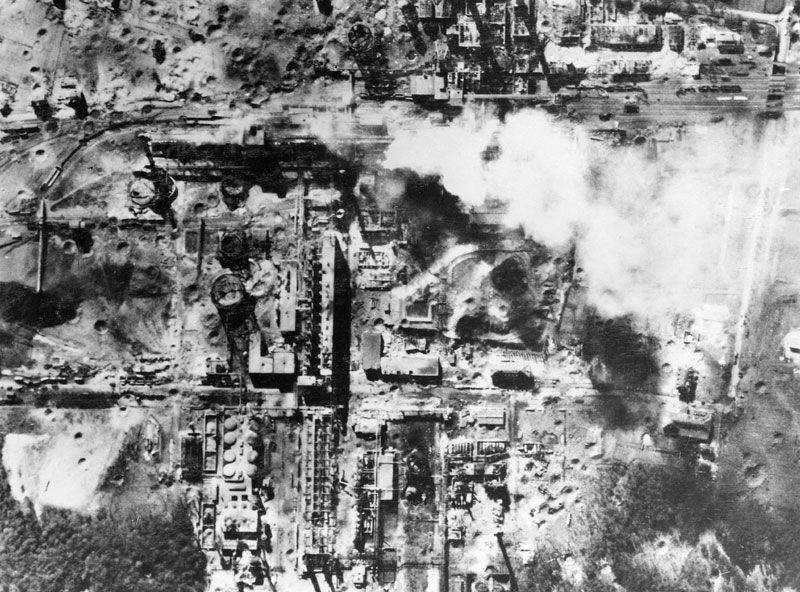 |
|
Darmstadt Damage
|
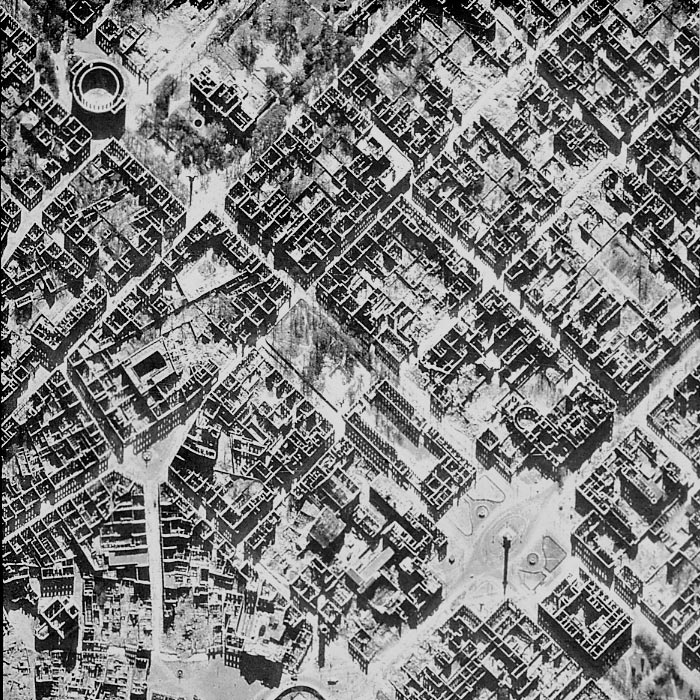 |
|
Another Area of Darmstadt
|
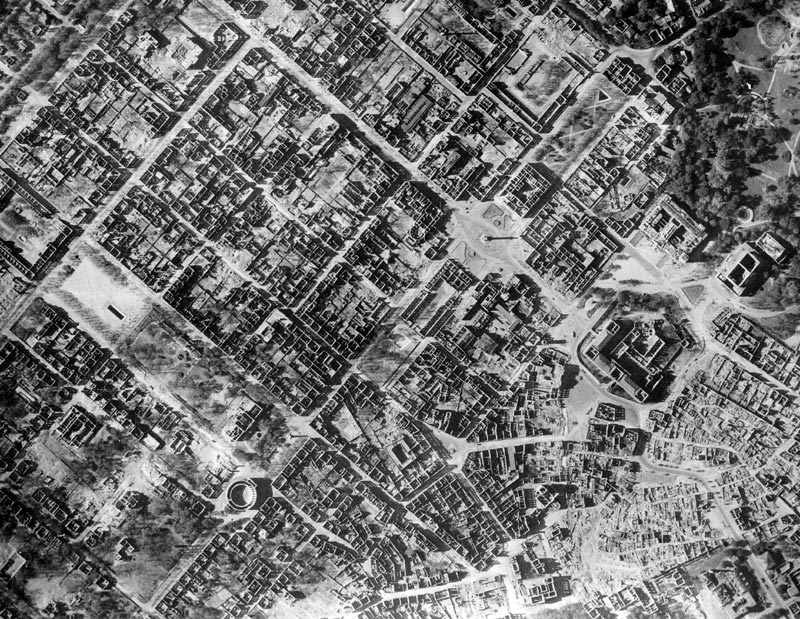 |
|
Closer View of Same Area
|
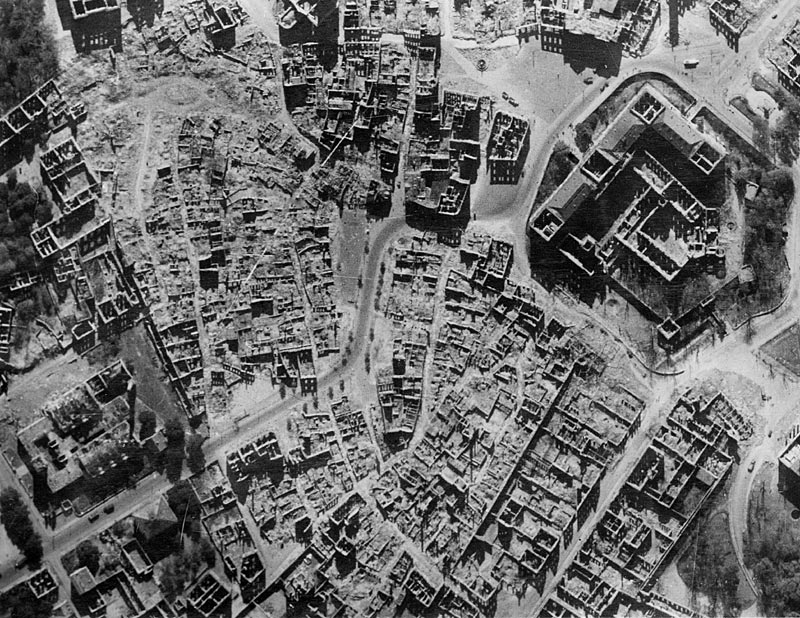 |
|
Luisenplace in Darmstadt
|
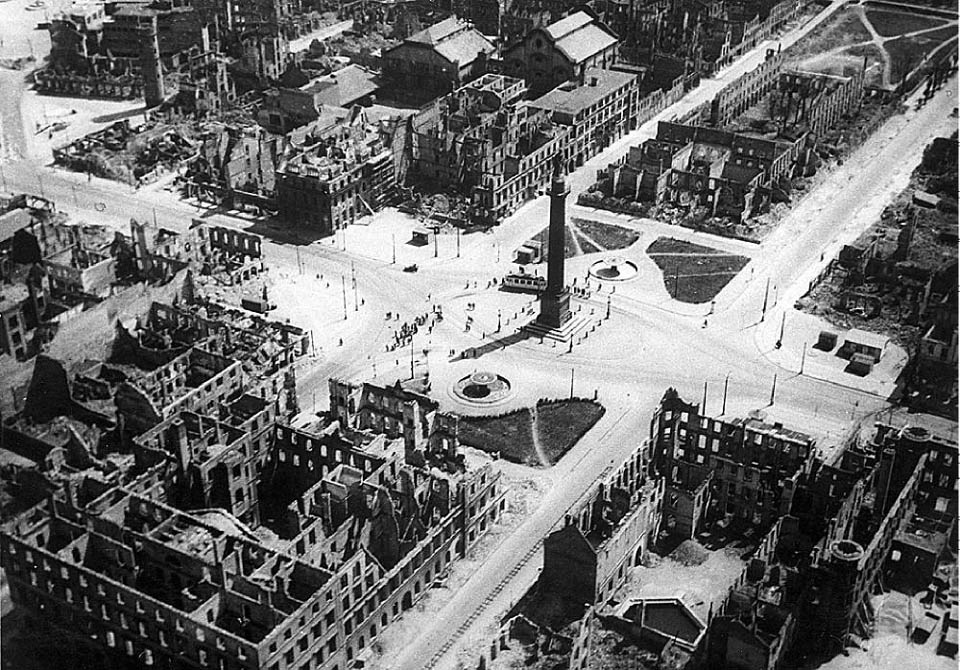 |
|
Bodies in Front of Bunker
|
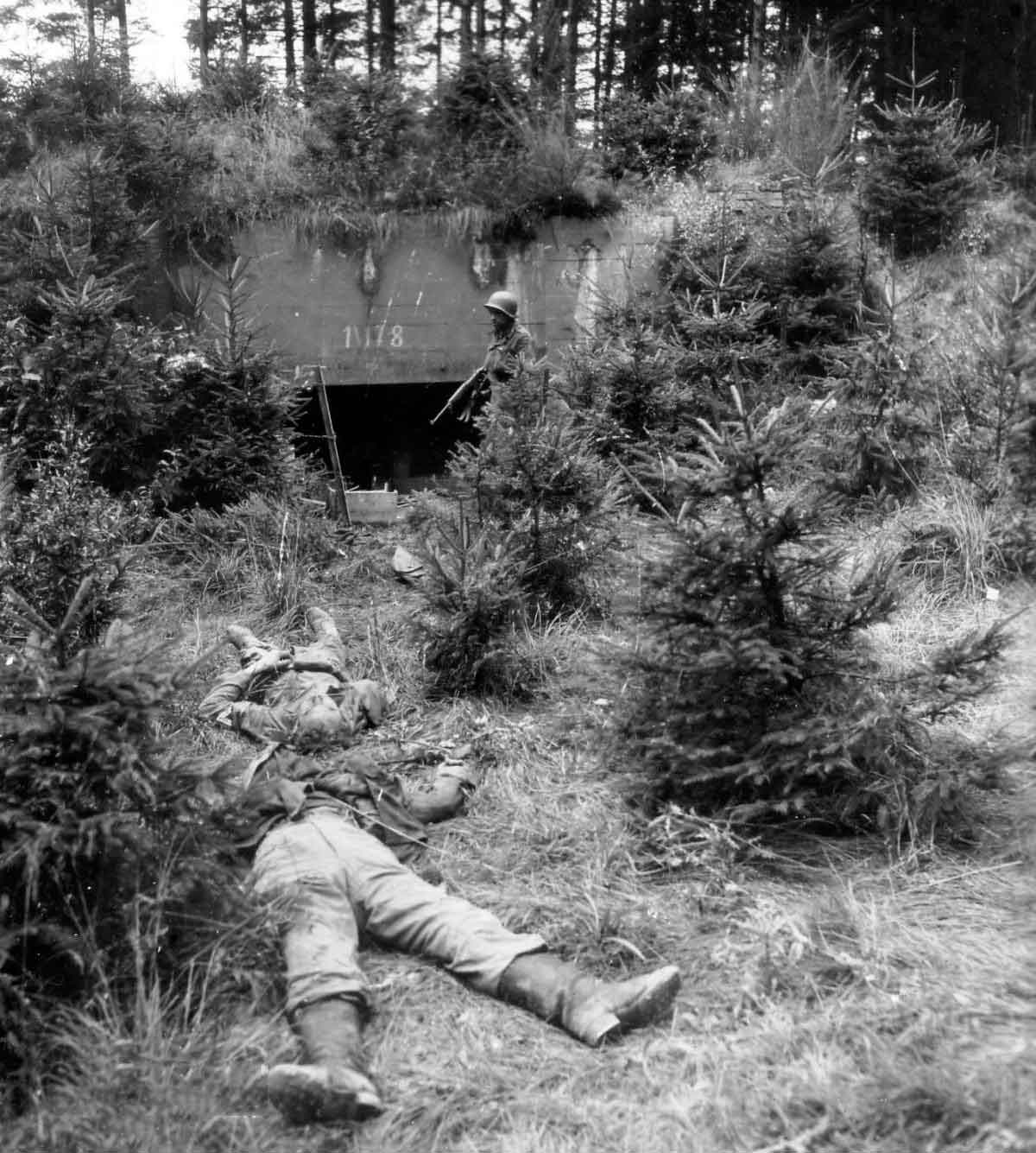 |
|
In the Streets of Brest
|
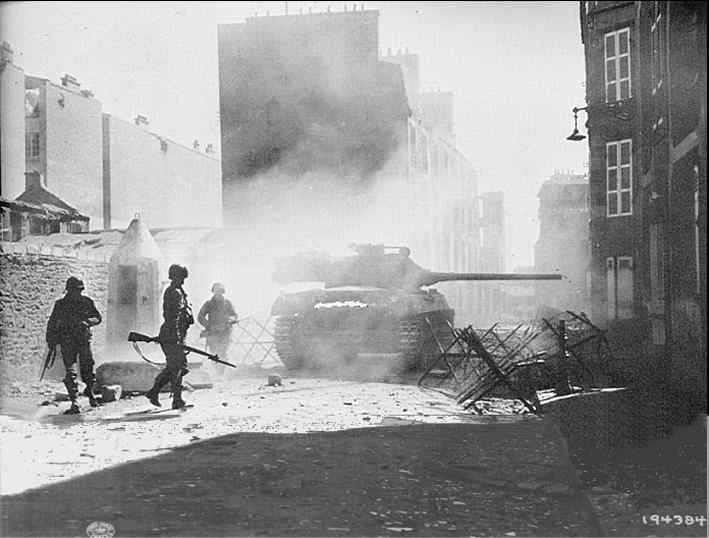 |
|
Allied Troops Enter Dijon
|
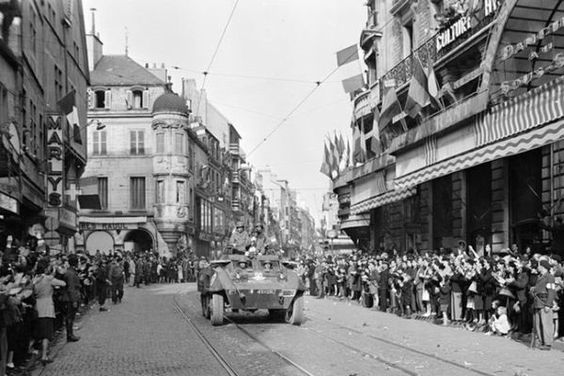 |
|
Attending the Wounded
|
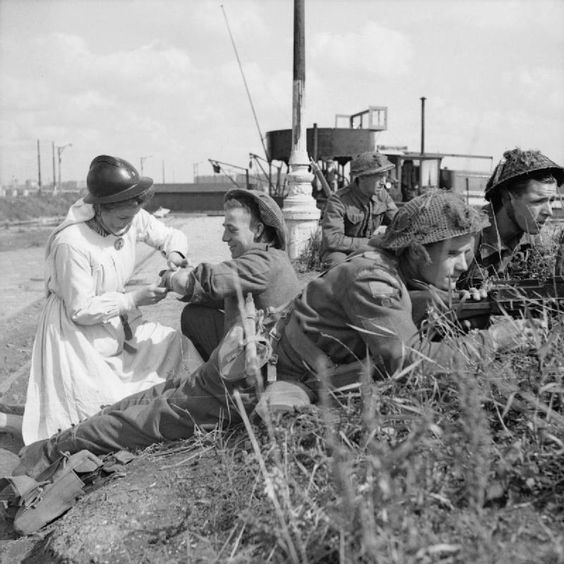 |
|
Belgian Children Greet Soldier
|
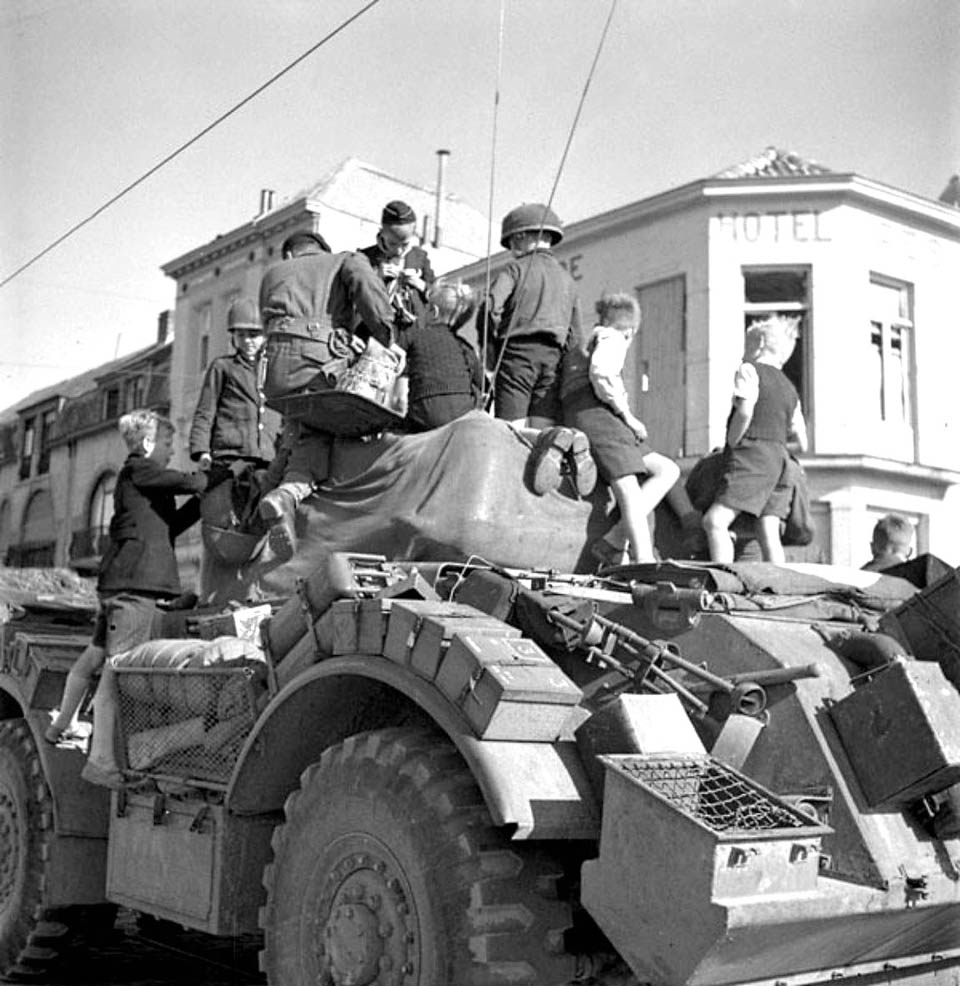 |
|
Passing Through Montefiore
|
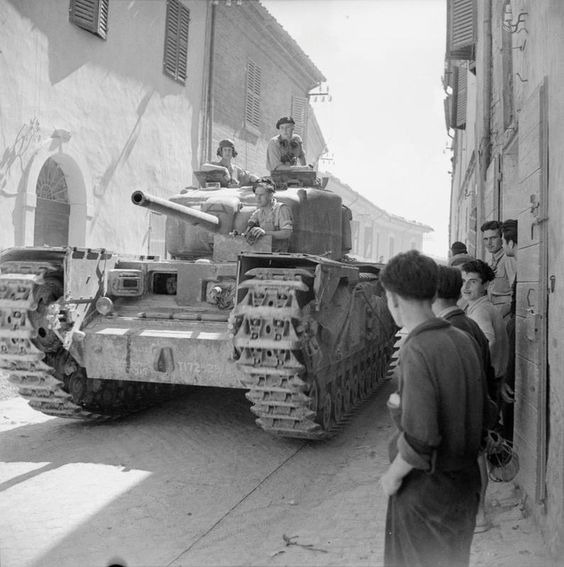 |
|
Crossing into Germany
|
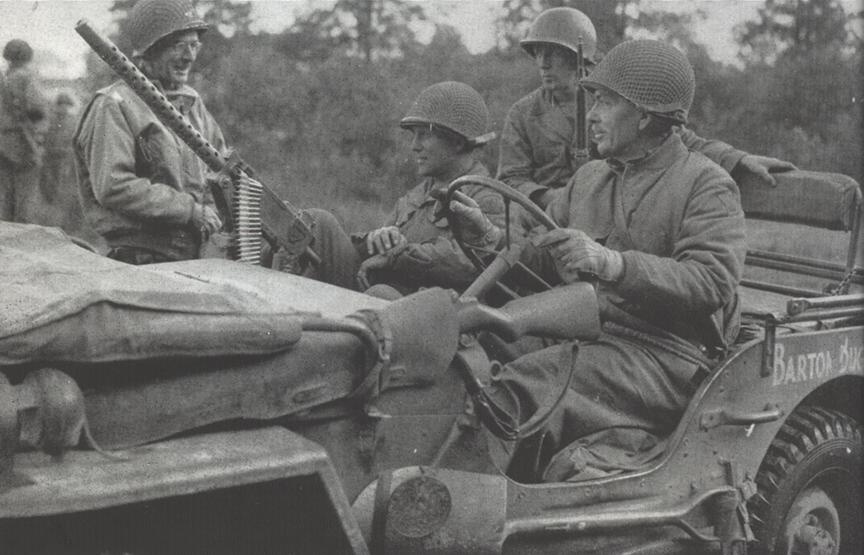 |
|
Allied Troops Clearing Germans
|
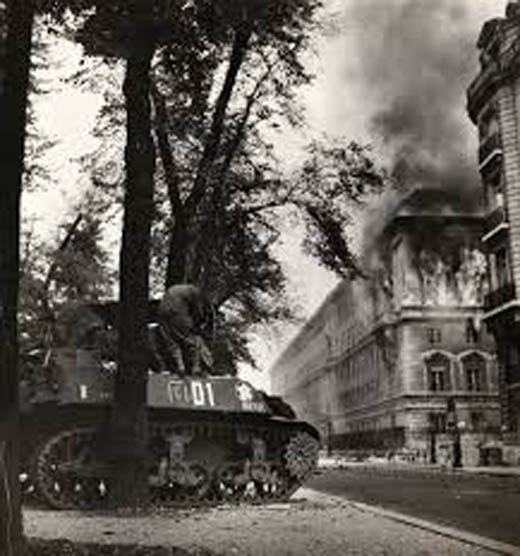 |
|
Crossing the Albert Canal
|
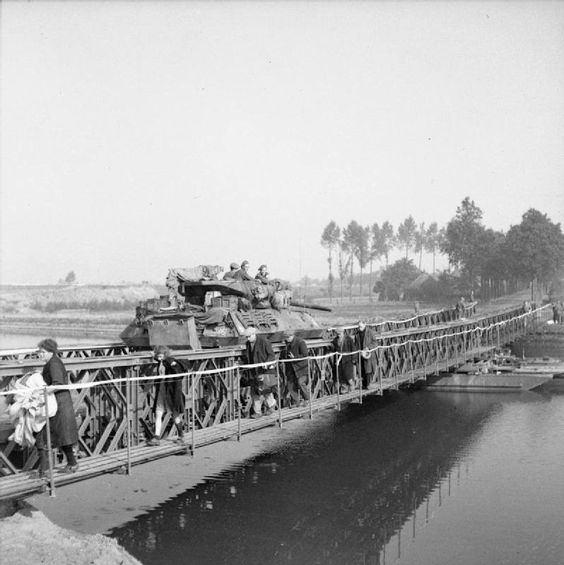 |
|
Der Marktplatz
|
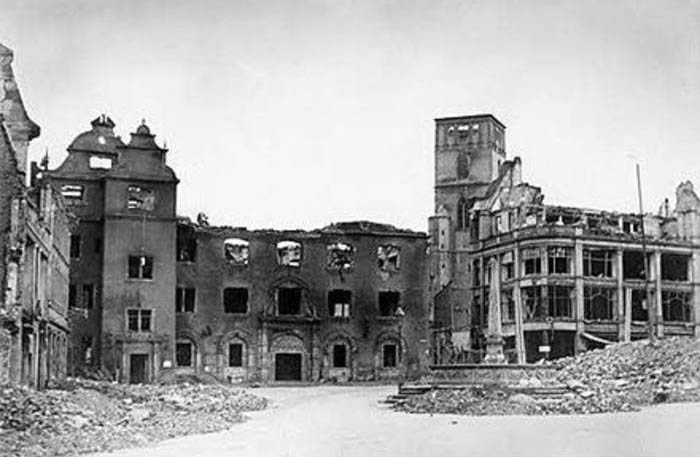 |
|














